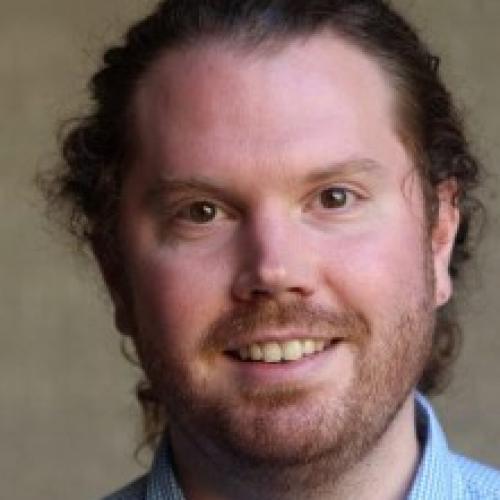
Dr Gareth Purvis
I am a basic scientist by training with an in interest in innate immune cell biology primarily in cardiovascular disease.
I received my BSc (Hons) in Biology from the University of York where I received the Head of Departments award, before being accepted onto a 4 year MRes/PhD program funded by the British Heart Foundation at the William Harvey Research Institute, Queen Mary University of London.
Following completion of his PhD, entitled ‘Exploring the role of Annexin-A1 in the Pathophysiology of Diabetes Mellitus’, I moved to the University of Oxford where I work in the lab of Prof David Greaves within the Dunn School of Pathology and Prof Keith Channon in Cardiovascular medicine.
My main research focus is to understand at a single cell level how white blood cells called monocytes are recruited and re-programmed to undergo monocyte to macrophage differentiation at sites of inflammation. With a particular interest on how we can therapeutically alter this process to promote resolution of inflammation and tissue repair.
- Purvis GSD, Collino M, Aranda-Tavio H, Chiazza F, O’Riordan CE, Zeboudj L, Mohammad S, Collotta D, Verta R, Guisot NES, Bunyard P, Yaqoob MM, Greaves DR and Thiemermann C. (2020) Inhibition of Bruton's tyrosine kinase regulates macrophage NF-kB and NLRP3 inflammasome activation in metabolic inflammation. The British Journal of Pharmacology doi: 10.1111/bph.15182 (IF 8.73)
- Purvis GSD, Solito E and Thiemermann C. (2019). AnnexinA1: Therapeutic potential in microvascular disease. Frontiers in Immunology doi: fimmu.2019.00938 (IF 7.56)
- Purvis GSD, Chiazza F, Azevedo Loiola R, Kusters DHM, Reutelingsperger C, Collino M, Baragetti A, Norata D, Solito E and Thiemermann C. (2019) AnnexinA1 regulates RhoA activation in a murine model of insulin resistance and diabetic nephropathy. Frontiers in Immunology doi: fimmu.2019.00571. (IF 7.56)
- Purvis GSD, Chiazza F, Chen J, Azevedo Loiola R, Martin L, Kusters DHM, Reutelingsperger C, Gnudi L, Yaqoob MM, Collino M, Thiemermann C and Solito E. (2018) Annexin A1 attenuates microvascular complications through restoration of Akt signalling in a murine model of type 1 diabetes. Diabetologia doi:10.1007/s00125-017-4469-y (IF 10.1)
Post-doctoral Researcher at the Sir William Dunn School of Pathology
Dr Gareth Purvis

I am a basic scientist by training with an in interest in innate immune cell biology primarily in cardiovascular disease.
I received my BSc (Hons) in Biology from the University of York where I received the Head of Departments award, before being accepted onto a 4 year MRes/PhD program funded by the British Heart Foundation at the William Harvey Research Institute, Queen Mary University of London.
Following completion of his PhD, entitled ‘Exploring the role of Annexin-A1 in the Pathophysiology of Diabetes Mellitus’, I moved to the University of Oxford where I work in the lab of Prof David Greaves within the Dunn School of Pathology and Prof Keith Channon in Cardiovascular medicine.
My main research focus is to understand at a single cell level how white blood cells called monocytes are recruited and re-programmed to undergo monocyte to macrophage differentiation at sites of inflammation. With a particular interest on how we can therapeutically alter this process to promote resolution of inflammation and tissue repair.
- Purvis GSD, Collino M, Aranda-Tavio H, Chiazza F, O’Riordan CE, Zeboudj L, Mohammad S, Collotta D, Verta R, Guisot NES, Bunyard P, Yaqoob MM, Greaves DR and Thiemermann C. (2020) Inhibition of Bruton's tyrosine kinase regulates macrophage NF-kB and NLRP3 inflammasome activation in metabolic inflammation. The British Journal of Pharmacology doi: 10.1111/bph.15182 (IF 8.73)
- Purvis GSD, Solito E and Thiemermann C. (2019). AnnexinA1: Therapeutic potential in microvascular disease. Frontiers in Immunology doi: fimmu.2019.00938 (IF 7.56)
- Purvis GSD, Chiazza F, Azevedo Loiola R, Kusters DHM, Reutelingsperger C, Collino M, Baragetti A, Norata D, Solito E and Thiemermann C. (2019) AnnexinA1 regulates RhoA activation in a murine model of insulin resistance and diabetic nephropathy. Frontiers in Immunology doi: fimmu.2019.00571. (IF 7.56)
- Purvis GSD, Chiazza F, Chen J, Azevedo Loiola R, Martin L, Kusters DHM, Reutelingsperger C, Gnudi L, Yaqoob MM, Collino M, Thiemermann C and Solito E. (2018) Annexin A1 attenuates microvascular complications through restoration of Akt signalling in a murine model of type 1 diabetes. Diabetologia doi:10.1007/s00125-017-4469-y (IF 10.1)
Post-doctoral Researcher at the Sir William Dunn School of Pathology